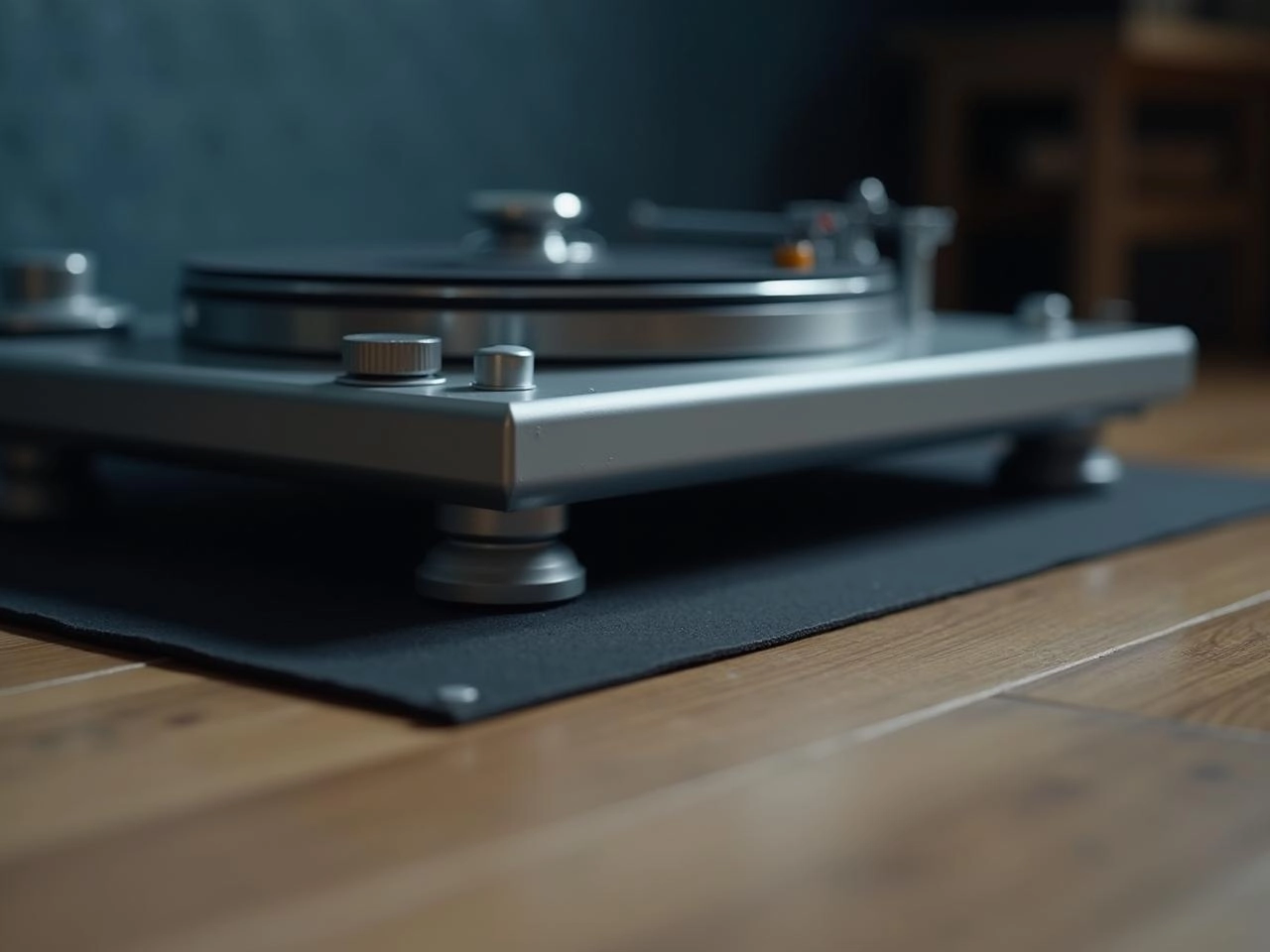In environments with frequent footfalls, adjacent loud music, or nearby machinery, audio equipment is susceptible to external kinetic energy, which drastically degrades sound fidelity. Isolation mats effectively manage vibrations from heavy traffic by acting as a mechanical low-pass filter, decoupling the component from the vibrating surface and converting structural-borne energy into negligible heat. The core function is to maintain a stable, non-resonant platform for sensitive audio gear.
The Physics of Floor Vibration Coupling
Heavy traffic creates low-frequency, structural-borne vibrations that travel easily through solid flooring materials (wood, concrete). When an audio component (like a speaker, CD player, or turntable) is directly coupled to this surface, these vibrations are transmitted into the sensitive mechanical or electronic parts.
The Impact on Sensitive Equipment
- Turntables: Vibrations cause the stylus to move relative to the groove, resulting in woofer pumping, acoustic feedback, and audible ‘skipping’ or rumble.
- CD/DACs: Vibration introduces timing errors (jitter) and affects the delicate laser tracking mechanism.
- Tube Amplifiers: Microphonic tubes can pick up structural vibrations, adding unwanted noise and coloration to the signal.
How High-Density Isolation Mats Provide Damping
Effective isolation mats are engineered with a specific, optimized balance of mass, stiffness, and damping to handle the wide frequency range associated with floor traffic.
Decoupling and Resonance Control
The primary function is decoupling. The mat introduces a material with a dramatically different acoustic impedance between the equipment and the floor. This impedance mismatch causes most of the vibrational energy to be reflected back or, more importantly, absorbed.
- Key Design Principle: Critical Damping
- The mat material possesses a high damping coefficient, meaning it efficiently absorbs vibrational energy.
- The mat’s own natural resonance frequency is engineered to be significantly lower than the lowest frequency generated by the equipment or expected from floor traffic (typically below 5 Hz).
| Traffic Condition | Frequency Range | Required Mat Characteristic |
| Foot Traffic | 5 Hz – 20 Hz (Low) | High mass and high internal damping. |
| Nearby Subwoofer | 20 Hz – 80 Hz (Mid) | Optimized thickness to lower natural resonance. |
| General Structure | 100+ Hz (High) | Viscoelastic or constrained layer damping (CLD) construction. |
Optimizing Your Setup for High-Traffic Areas
For severe vibration issues, combining isolation mats with isolation footers can create a compound isolation system, increasing the efficacy dramatically.
Stacking for Multi-Stage Isolation
Using a thick isolation mat (Stage 1) to decouple the component from the shelf, and then using specialized footers (Stage 2) between the mat and the component’s chassis, provides two distinct layers of damping. This multi-stage approach is highly effective at eliminating residual, low-amplitude energy.
Q&A: Heavy Traffic Installation
Q: Should I use a thick mat or a thin mat for a heavy component in a high-traffic area? A: A thicker mat (25mm+) is generally preferred for high-traffic areas, as the increased mass and material volume better dissipate low-frequency energy from footfalls.
Q: Can I use carpet padding as isolation? A: No. Standard carpet padding is designed for comfort, not acoustic isolation. It often has a high-Q factor (low damping) and will actually store and release vibrational energy, exacerbating low-frequency rumble.
